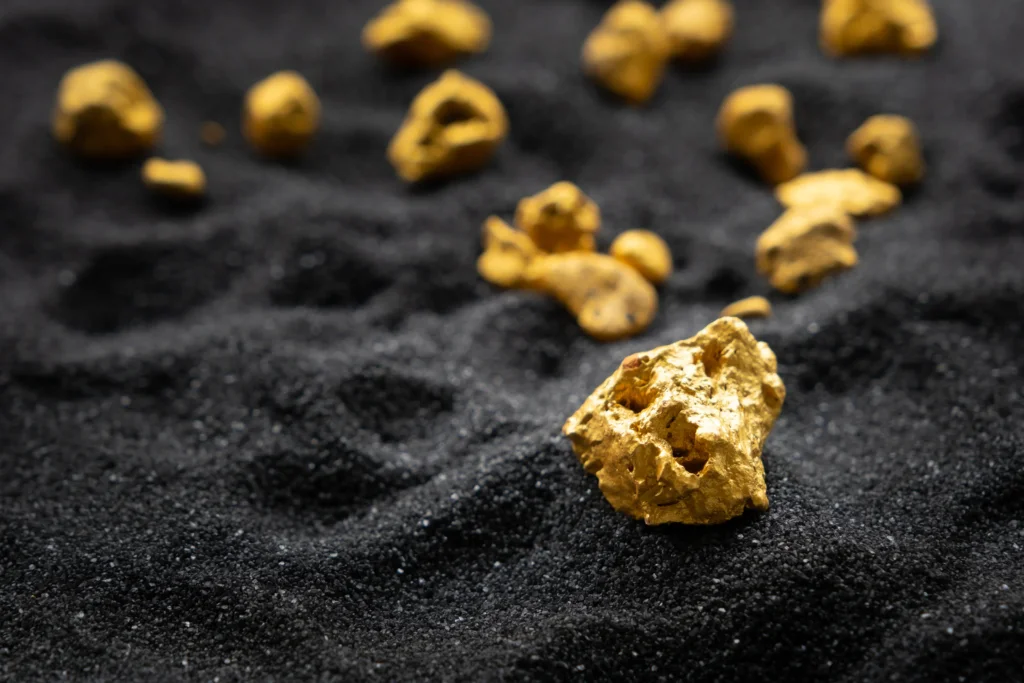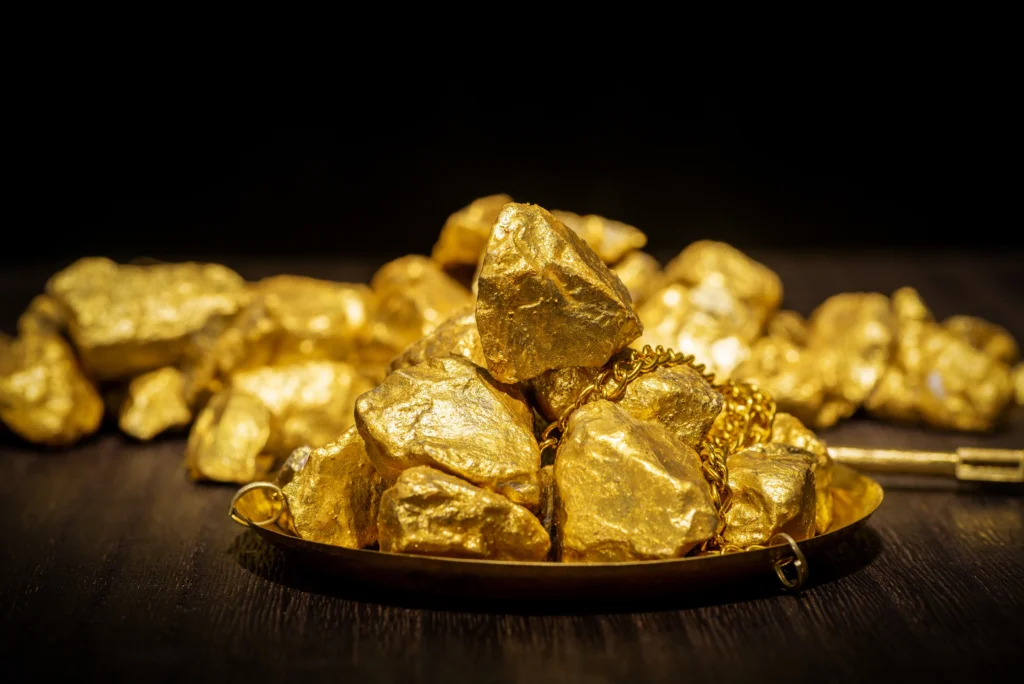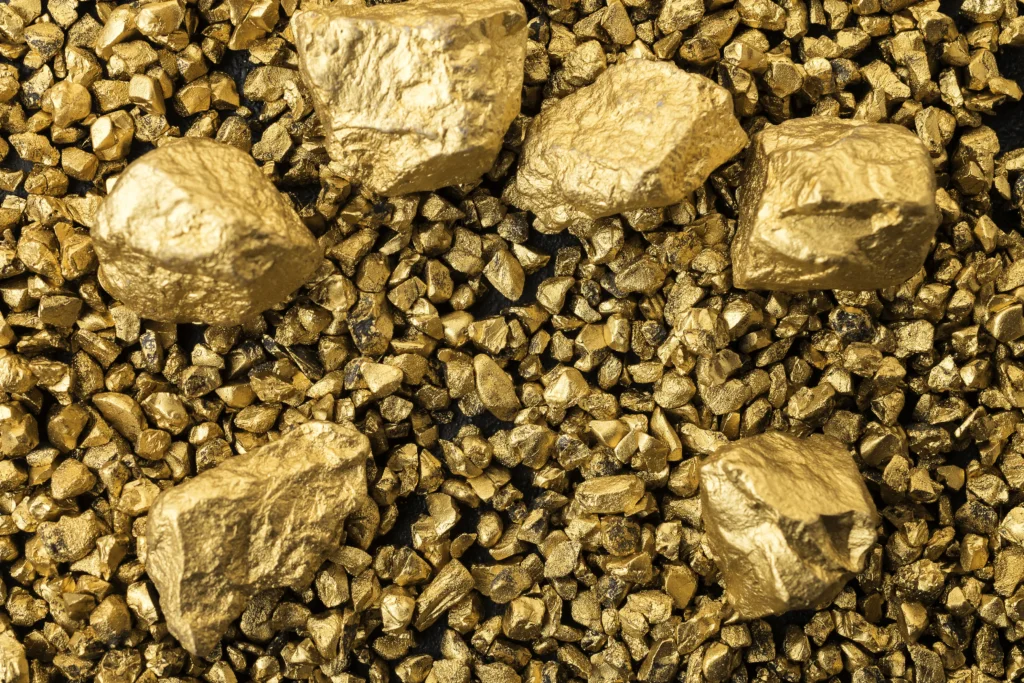Carvão ativado para recuperação de ouro
.webp)
Buy Gold Recovery Activated Carbon
Desafios do sector
Adsorptive Selectivity Difficulties
- Activated carbon does not adsorb gold solely but rather has competition from other metal cyanide complexes (e.g. copper, nickel) which affect the gold recovery.
- Organic sorption contaminants like humic acids further affect the selectivity of the carbon-supported composite materials.
Carbon Fouling / Deactivation
- Pore blockage can be from inorganic precipitates (e.g. calcium carbonate, silica) and from organic volatiles (e.g. oils, floculants).
- Mechanical agitation causes carbon erosion via attrition, and all mechanical erosion or attrition losses carbon.
Regeneration Limitations
- Through thermal reactivation, activated carbons have limits to their capacity to adsorb.
- The process of thermal reactivation can create damage to the carbon's pore structure that is irreversible, and can damage carbons to unusable condition.
- The chemical process to strip valuable metals from carbon will create new aqueous waste streams that require treatment.
Processing Time Limitations
- The kinetics of adsorption are relatively slow and lead to increased retention times in both CIP/CIL circuits.
- In heap leach/CIC applications, channeling developes during carbon column feed(ing) with varying flow paths and a drop in recovery.
tipos relacionados de carvão ativado
-r8fslg51nt6wgjtvh6yldxb1gtkgm3lpe0oq1akgog.webp)
- Valor de iodo: 600-1200
- Tamanho da malha: 1×4/4×8/8×16/8×30/12×40/20×40/20×50/30×60/40×70 (Mais tamanho a pedido)
- Densidade aparente: 400-700
-r8fsli0q1h9h3rr567ruiwtynlb71ht629zozuhoc0.webp)
- Valor de iodo: 500-1300
- Tamanho da malha:0.9-1mm/1.5-2mm/3-4mm/6mm/8mm(Mais tamanho a pedido)
- Densidade aparente: 450-600
-r8fslbfupn0gui0p8mxgjghqhw7mjm31pdfamwrfjk.webp)
- Valor de iodo: 500-1300
- Dimensão da malha: 150/200/300/350 (outras dimensões a pedido)
- Densidade aparente: 450 - 550
-r8fsle9da54btbwls65c8xs4a1tq6pe8prdr2qn90w.webp)
- Valor de iodo: 400-800
- Tamanho da malha: 100×100×100mm/100×100×50mm (densidade celular personalizada a pedido)
- Densidade aparente: 350-450
- Diâmetro do furo: 1,5-8 mm

- Valor de iodo: 700-1200 mg/g
- Área de superfície: 700-1200 m²/g
- Densidade aparente: 320-550 kg/m³

- Valor de iodo: 700-1200 mg/g
- Área de superfície: 700-1200 m²/g
- Densidade aparente: 320-550 kg/m³

- Valor de iodo: 700-1200 mg/g
- Área de superfície: 700-1200 m²/g
- Densidade aparente: 300-650 kg/m³

- Valor de iodo: 700-1200 mg/g
- Área de superfície: 700-1200 m²/g
- Densidade aparente: 320-550 kg/m³

- Método de ativação: Ativação por vapor/gás a altas temperaturas
- Estrutura de poros: Microporosa dominada, distribuição uniforme dos poros
- Perfil ambiental: Sem químicos, baixo teor de cinzas
- Aplicações principais: Adsorção em fase gasosa, purificação de água potável

- Método de ativação: Ativação química (por exemplo, H₃PO₄/ZnCl₂) a temperaturas moderadas
- Estrutura de poros: Mesoporoso-rico, maior área de superfície
- Eficiência do processo: Tempo de ativação mais curto, rendimento 30-50% mais elevado
- Pós-tratamento: É necessária uma lavagem com ácido para remover os resíduos

- Funcionalização: Carregado com agentes activos (por exemplo, I₂/Ag/KOH)
- Adsorção direcionada: Captura melhorada de poluentes específicos (por exemplo, Hg⁰/H₂S/gases ácidos)
- Personalização: Quimicamente optimizado para contaminantes alvo
- Aplicações principais: Tratamento de gases industriais, proteção CBRN
Porquê utilizar o nosso carvão ativado

Enhanced Gold Selectivity:
Our specialized pore structure preferentially adsorbs gold-cyanide complexes over competing metal contaminants.

Superior Mechanical Durability:
High resistance to attrition minimizes carbon fragmentation during aggressive agitation processes.

Optimized Regeneration Performance:
Maintains consistent adsorption capacity through multiple thermal reactivation cycles.

Reduced Fouling Susceptibility:
Surface-modified carbon resists pore blockage from inorganic scales and organic impurities.
Processo e tecnologia
1. Carbon in Pulp (CIP)
Visão geral da solução
Gold-cyanide solution from leached ore slurry contacts activated carbon in sequential adsorption tanks, where gold selectively loads onto carbon particles.

Principais vantagens
- Enables counter-current flow configuration for optimized gold recovery
- Allows separate optimization of leaching and adsorption stages
- Reduces gold losses through efficient solid-liquid separation
- Minimizes carbon handling in aggressive leaching environments
2. Carbon in Leach (CIL)
Visão geral da solução
Simultaneous leaching and adsorption occur in the same reactor tanks, with activated carbon added directly to the leaching slurry.

Principais vantagens
- Integrates leaching and adsorption into single-stage operation
- Accelerates overall process kinetics through continuous gold removal
- Prevents gold re-precipitation by immediate adsorption
- Simplifies plant design with reduced tank requirements
3. Heap Leaching with Carbon in Columns (CIC)
Visão geral da solução
Pregnant solution from ore heaps percolates through fixed-bed columns packed with activated carbon for gold adsorption.

Principais vantagens
- Handles low-grade solutions effectively through passive flow design
- Adapts to variable flow rates and solution volumes
- Eliminates mechanical agitation for reduced carbon attrition
- Facilitates simple carbon transfer for elution cycles
4. Carbon in Conduit / Fluidized Bed Systems
Visão geral da solução
Activated carbon moves counter-currently to gold-bearing solution in inclined channels or fluidized columns.

Principais vantagens
- Enhances mass transfer efficiency through turbulent flow regimes
- Enhances mass transfer efficiency through turbulent flow regimes
- - Allows continuous carbon loading without process interruption
- - Minimizes channeling effects common in static columns

